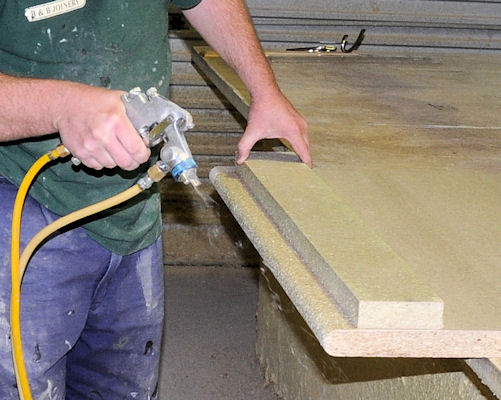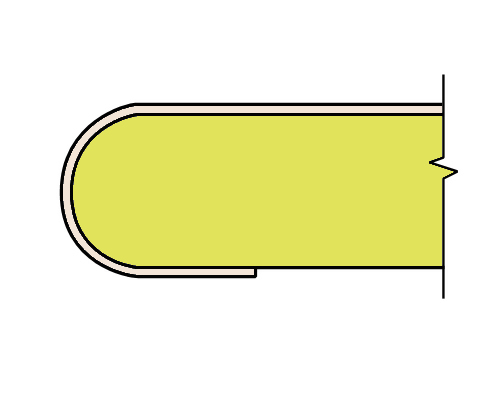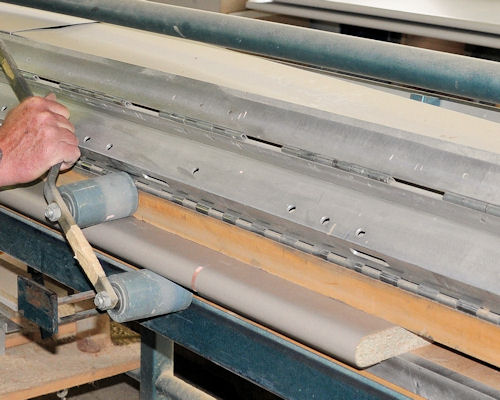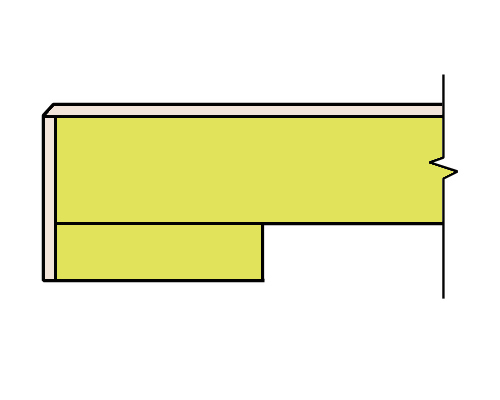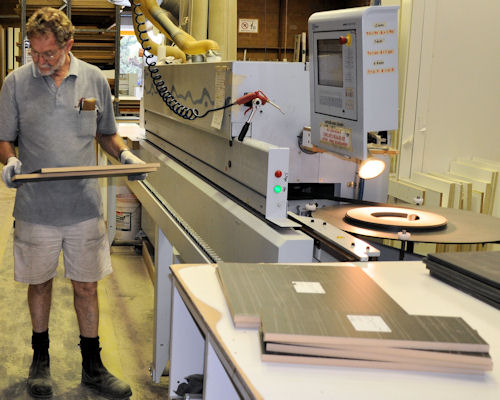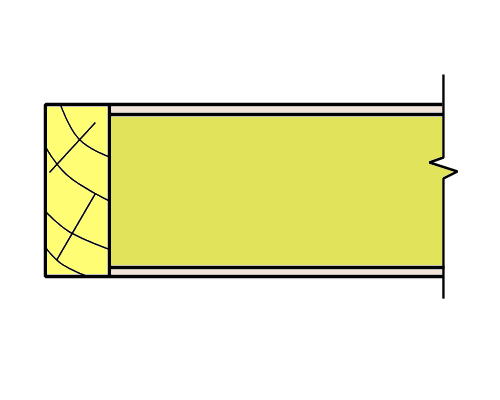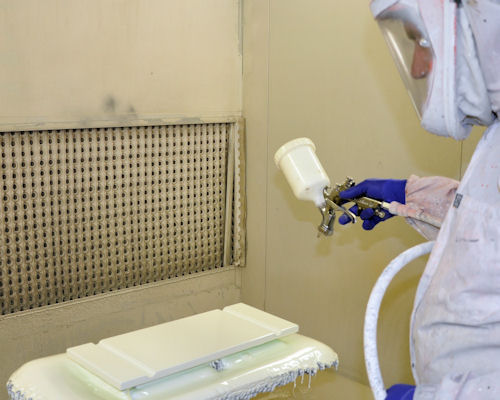Edge treatments
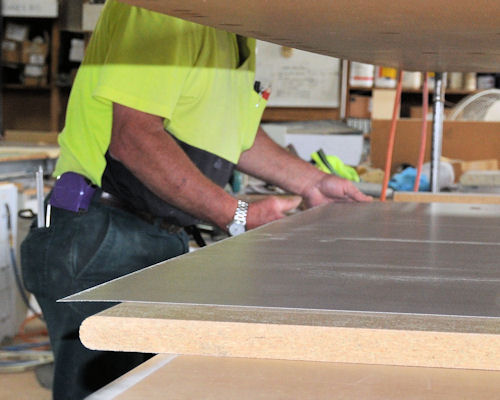 Audio for slide 3 (mp3 |6|KB)
Audio for slide 3 (mp3 |6|KB)
The simplest method is to glue the laminate to the flat area of the bench top first, with an overhang where the rounded edge will be formed.
The bench top is then loaded into the machine and the area to be formed is heated to the correct temperature.

 Audio for slide 7 (mp3 |6|KB)
Audio for slide 7 (mp3 |6|KB)
The edge tape can vary in thickness, depending on the function of the panel and the type of laminate specified.
Most cabinet carcases and doors use edging that ranges between 0.07 mm and 2.00 mm.
Note that the thickness of the edging will affect the gap between doors and drawers, so it's important to establish this thickness before these components are cut to size.


Learning activity
Audio 10 (mp3 |6|KB)There are a variety of methods used to produce post-formed edges, with varying levels of automation depending on the machinery used.
Does your workplace have a post-forming machine?
State the brand name of the machine and briefly describe the process used to roll the laminate.
Share your answer with your trainer and other learners in your group.
You may include digital photos of the machine and the process of rolling the laminate if you wish.

 Go to Controlling dust
Go to Controlling dust